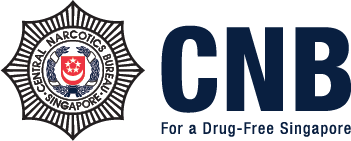Changes to Misuse Of Drugs Act (w.e.f. 1 December 2019)
29 November 2019
With effect from 1 December 2019, the Central Narcotics Bureau (CNB) will be listing 24 New Psychoactive Substances (NPS)[1] in the First Schedule of the Misuse of Drugs Act (MDA) (see Annex A for the list of drugs).
2 Following the listing of the 24 NPS as Class A controlled drugs, the trafficking, manufacture, import, export, possession or consumption of these substances will constitute an offence under the MDA. Any person found guilty of trafficking Class A controlled drugs will face a minimum of five years’ imprisonment and five strokes of the cane. They will also be liable for enhanced penalties if they re-offend or sell to young or vulnerable persons. CNB will also be empowered to subject NPS abusers to supervision, commit them to a drug rehabilitation centre for treatment and rehabilitation, or charge them in court.
3 CNB will be listing six NPS in the Fifth Schedule of the MDA (see Annex B). This allows CNB to seize these NPS so that their circulation can be restricted while research and industry consultation are conducted.
Global NPS Situation
4 There has been a rapid increase in the number, type and availability of NPS across the globe. Based on a report released in June 2019 by the United Nations Office on Drugs and Crime, there were at least 892 NPS identified by end 2018.[2]
5 Many of these NPS have been reported in overseas journals to have no licit medical use. Their abuse has been linked to adverse physical and psychological reactions, including paranoia, seizures, hallucinations and even death. CNB regularly reviews strategies to improve detection and regulation of NPS, including regular listing of NPS that have emerged in the market. A significant proportion of the NPS reported overseas are currently controlled under the MDA.
CENTRAL NARCOTICS BUREAU
29 NOVEMBER 2019
[1] New psychoactive substances (NPS) refer to substances which produce the same (or similar) effects as controlled drugs such as cannabis, cocaine, “ecstasy”, methamphetamine or heroin.
[2] UNODC World Drug Report (June 2019).
Reference:
The Fifth Schedule of the MDA was first enacted on 1 May 2013 to allow CNB to control and prevent the proliferation of NPS. NPS can be temporarily listed in the Fifth Schedule for up to 12 months, with a possibility of extension for another 12 months. The Fifth Schedule enables CNB to seize these NPS so that their circulation can be restricted while research and industry consultation are conducted. These processes are necessary before a substance is classified as a controlled drug. The trafficking, manufacture, import, export, possession or consumption of any substance, which is temporarily listed in the Fifth Schedule, will not constitute an offence under the MDA, until that substance is listed as a controlled drug in the First Schedule.
Annex A
Substances Listed to the First Schedule as Class A Controlled Drug (with effect from 1 December 2019)
Methyl 2-[1-(5-fluoropentyl)-1H-indole-3-carboxamido]-3-phenylpropanoate (also known as 5-Fluoro-MPP-PICA or 5-Fluoro-MPhP-PICA or MPHP-2201) and its fluoro positional isomers in the pentyl group
[1-(4-Fluorobenzyl)-1H-indol-3-yl](2,2,3,3-tetramethylcyclopropyl)methanone (also known as FUB-144 or FUB-UR-144) and its fluoro positional isomers in the phenyl ring
Methyl 3,3-dimethyl-2-(1-(pent-4-en-1-yl)-1H-indazole-3-carboxamido)butanoate (also known as MDMB-4en-PINACA or MDMB-PINACA N1-pentyl-4-en isomer or MDMB(N)-022) and its hexanoate isomers and their respective pentenyl positional isomers in the pentyl group
N-[1-(3-Methoxyphenyl)cyclohexyl]-piperidine (also known as 3-Methoxyphencyclidine or 3-Methoxy-PCP or 3-MeO-PCP) and its methoxy positional isomers in the phenyl ring
1-Acetyl-N,N-diethyllysergamide (also known as N-Acetyl-LSD or ALD-52) and its acyclic secondary and tertiary amide structural isomers
N-(1-Adamantyl)-5-chloropentyl-1H-indazole-3-carboxamide (also known as 5-Chloro-APINACA or 5-Chloro-AKB48) and its chloro positional isomers in the pentyl group
Ethyl 2-[1-(5-fluoropentyl)-1H-indazole-3-carboxamido]-3-methylbutanoate (also known as 5-Fluoro-AEB or 5-Fluoro-EMB-PINACA) and its pentanoate isomers and their respective fluoro positional isomers in the pentyl group
N,N-Diethyl-3-hydroxy-7-methyl-2-oxo-4,6,6a,7,8,9-hexahydroindolo-[4,3-fg]quinoline-9-carboxamide (also known as 2-Oxo-3-hydroxy-LSD) and its acyclic secondary and tertiary amide structural isomers
[1-(5-Hydroxypent-1-yl)-1H-indol-3-yl](2,2,3,3-tetramethylcyclopropyl)methanone and its hydroxy positional isomers in the pentyl group
5-[3-(2,2,3,3-Tetramethylcyclopropanecarbonyl)-1H-indol-1-yl]pentanoic acid
5-{3-[(1-Amino-3-methyl-1-oxobutan-2-yl)carbamoyl]-1H-indazole-1-yl}pentanoic acid and its N-(1-amino-1-oxopentan-2-yl) isomers
5-{3-[(1-Amino-3,3-dimethyl-1-oxobutan-2-yl)carbamoyl]-1H-indazole-1-yl}pentanoic acid and its N-(1-amino-1-oxohexan-2-yl) isomers
2-[1-(4-Fluorobenzyl)-1H-indazole-3-carboxamido]-3,3-dimethylbutanoic acid and its hexanoic acid isomers and their respective fluoro positional isomers in the phenyl ring
4-{3-[(2-Phenylprop-2-yl)carbamoyl]-1H-indazole-1-yl}butanoic acid and its phenylpropyl isomers
2-[1-(4-Fluorobenzyl)-1H-indole-3-carboxamido]-3-methylbutanoic acid and its 1-pentanoic acid and 2-methylbutanoic acid isomers and their respective fluoro positional isomers in the phenyl ring
2-[1-(5-Fluoropentyl)-1H-indazole-3-carboxamido]-3-methylbutanoic acid and its 1-pentanoic acid and 2-methylbutanoic acid isomers and their respective fluoro positional isomers in the pentyl group
N-(1-Adamantyl)-5-hydroxypentyl-1H-indazole-3-carboxamide and its hydroxy positional isomers in the pentyl group
5-{3-[(1-Adamantyl)carbamoyl]-1H-indazole-1-yl}pentanoic acid
5-{3-[(1-Amino-3,3-dimethyl-1-oxobutan-2-yl)carbamoyl]-1H-indole-1-yl}pentanoic acid and its N-(1-amino-1-oxohexan-2-yl) isomers
[1-(5-Chloropent-1-yl)-1H-indol-3-yl](2,2,3,3-tetramethylcyclopropyl)methanone (also known as 5-Chloro-UR-144) and its chloro positional isomers in the pentyl group
[1-(5-Bromopent-1-yl)-1H-indol-3-yl](2,2,3,3-tetramethylcyclopropyl)methanone (also known as 5-Bromo-UR-144) and its bromo positional isomers in the pentyl group
N-(1-Amino-3-methyl-1-oxobutan-2-yl)-1-(4-fluorobenzyl)-1H-indole-3-carboxamide (also known as AB-FUBICA) and its N-(1-amino-1-oxopentan-2-yl) isomers and their respective fluoro positional isomers in the phenyl ring
N-(1-Adamantyl)-5-bromopentyl-1H-indazole-3-carboxamide (also known as 5-Bromo-APINACA or 5-Bromo-AKB48) and its bromo positional isomers in the pentyl group
N-(1-Amino-3,3-dimethyl-1-oxobutan-2-yl)-1-(5-fluoropentyl)-1H-indole-3-carboxamide (also known as 5-Fluoro-ADBICA) and its N-(1-amino-1-oxohexan-2-yl) isomers and their respective fluoro positional isomers in the pentyl group
Annex B
New Substances Listed in the Fifth Schedule (with effect from 1 December 2019)
6-Allyl-6-nor-lysergic acid diethylamide (also known as N-allyl-nor-LSD or AL-LAD) and its acyclic secondary and tertiary amide structural isomers
6-Ethyl-6-nor-lysergic acid diethylamide (also known as ETH-LAD) and its acyclic secondary and tertiary amide structural isomers
6-Propyl-6-nor-lysergic acid diethylamide (also known as PRO-LAD) and its acyclic secondary and tertiary amide structural isomers
Lysergic acid 2,4-dimethylazetidine (also known as LSZ)
1-Propionyl-N,N-diethyllysergamide (also known as 1-Propionyl-LSD or 1P-LSD) and its acyclic secondary and tertiary amide structural isomers
1-Butanoyl-N,N-diethyllysergamide (also known as 1-Butanoyl-LSD or 1B-LSD) and its acyclic secondary and tertiary amide structural isomers
